Mango
Latin: Magnifera indica
Family: Anacardiaceae
Indonesian: Mangga
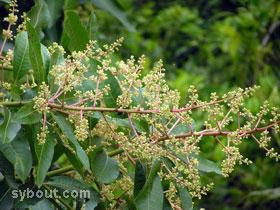
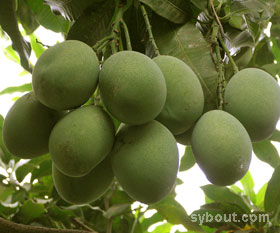
Until recently the mango probably was the most
popularly grown fruit tree for home gardens in Indonesia. Nowadays
towns are becoming more and more dense and many yards lack the space
for a tree of this size. In villages you still will see that nearly every
house has its own mango tree.
Probably there are as many varieties
of mangos as there are varieties of apples. The variety in my
garden is called "mangga madu" what can be translated as "honey
mango". It has small brown spots in its fruit flesh what is supposed
to be the "honey". The taste of ripe fruits certainly is
sweet.
As you can see from the pictures, not all of the mango flowers become mature fruits. Probably not all the
flowers are pollinated, and for sure many fruits drop when they are
still small. At the moment birds like bulbuls are noisily partying
in your mango tree you can bet that its fruits are ripe. Like many
other fruits mangoes have to be kept for a few days after harvesting
before they obtain their full sweet taste. Some people though like them
better with some salt added when still sour.
Banana
Latin: Musa species
Family: Musaceae
Indonesian: Pisang

The bigger part of the large number of banana varieties with edible fruits grow too tall for a relatively small garden like mine. In the past I had a few nice 4 - 5 meter high trees, but these caused much damage to other plants each time the fruits were harvested and the trunks were cut down. Finally I decided to remove these plants.
Luckily I found a short stem species that grows up to 1.5 m - 2,0 m high only and has nice tasting fruits.
Like most other banana varieties, the short stem variety in my garden grows best in
the sun, but it is still happy in a place that is shady for a part of the day. Banana trees like a humus righ soil and regular watering.

After the fruits are harvested, the banana trunk is cut off, as it will not produce new fruits from the same stem and die. Just leave one or more of the new shoots that normally appear near the bottom of the stem and you will soon have a new tree producing fruits.
Most edible banana varieties do not have seeds. Therefore the only way of
propagation is by separating new shoots from the mother stem. Several sources mention that the shoots with narrow leaves give more and better fruits than the shoots with broad leaves.
Biologically the stem is only the small and relatively hard part growing in, and a few centimeters above the soil. The part above this that looks as well like a stem, actually exists of leaf sheath layers. If this "false stem" (pseudostem) is cut through, you will see the leaf rings, which look a bit like the rings in a cut onion. New leaves start growing from inside the "real stem" and push up through the middle of the pseudostem
to appear at the centre of the crown. After I know this, I look with new eyes at the leaves in the top of a high stem banana tree.
Finally the flower will grow and appear via the same way, and turn into a bunch of bananas. After the banana tree has got a flower it will stop producing new leaves.
Nasnaran Mandarin
Latin: Citrus amblycarpa (Citrus limonellus)
Family: Rutaceae
Indonesian: Jeruk Sambal. Jeruk Limau, Jeruk Limu
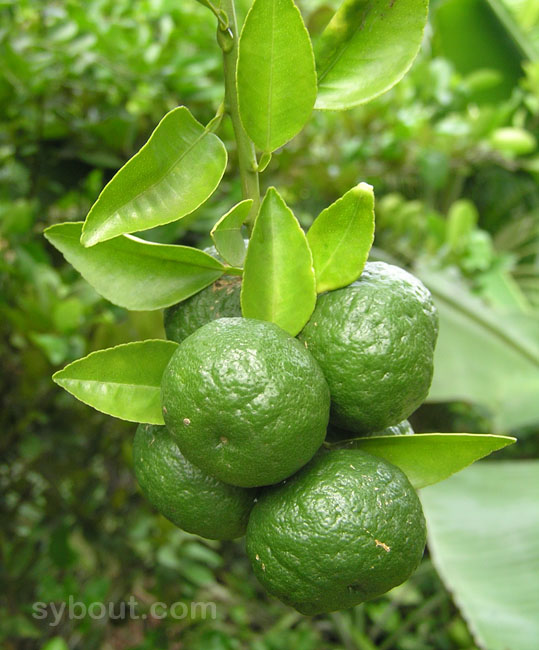
Citrus amblycarpa (Nasnaran Mandarin) is a shrub or small tree of about 5 meters height. It
has small fragrant shiny leaves and produces small white flowers. The flowers are that small that they often stay unnoticed.
Fully grown fruits have a diameter of 3 cm - 4.5 cm and have a thick irregular skin that turns from green to yellow
when mature. Like the leaves the fruits release a pleasant smell when touched or squeezed.
The Nasnaran Mandarin likes a place in full sun or partial shade.
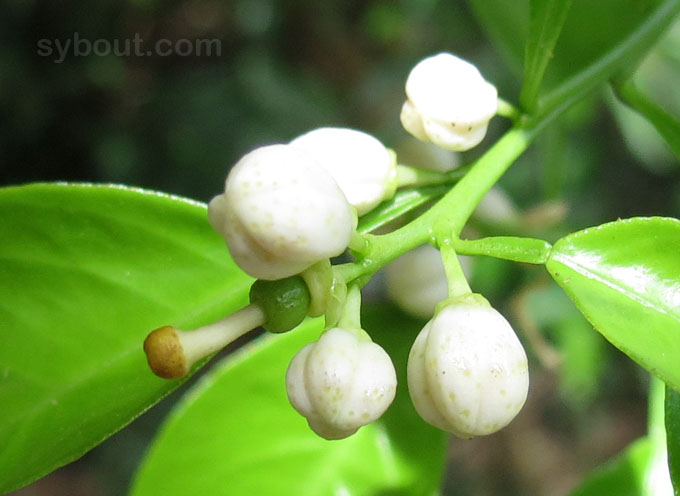
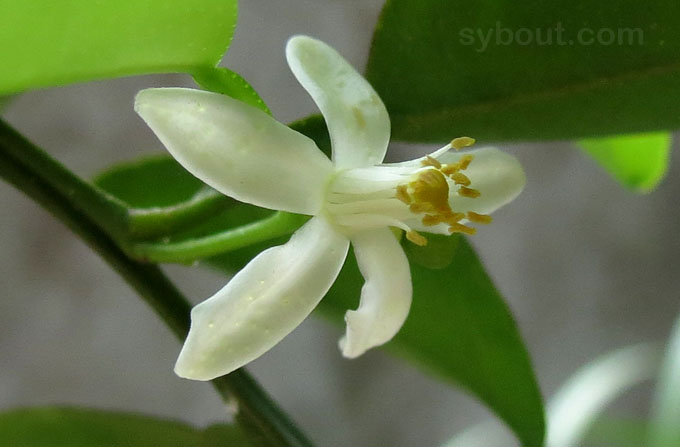
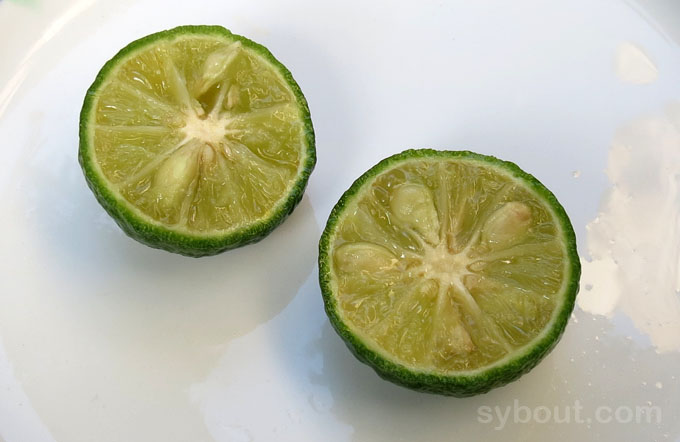
In my kitchen the (nearly ripe) fruits of this tree are used for
making sambal and as fish dressing. Some people seem
to use it as well for soup-like dishes and bakmi. Jeruk nipis (Citrus aurantiifolia)
is an other lime commonly used for the latter.
The leaves of both Nasnaran Mandarin and "Jeruk nipis" are used to give a special flavour to various fish, meat and vegetable dishes.
The Nasnaran Mandarin produces
fruits all year round. In the dry season production may decrease.
The fruits are best used before they ripen, so when they are still
green.
This species is easily propagated by seeds. Seedlings often show up under the tree. This is the result of
unnoticed fallen fruits.
Sapodilla
Latin: Manilkara zapota sp
Family: Sapotaceae
Indonesian: Sawo
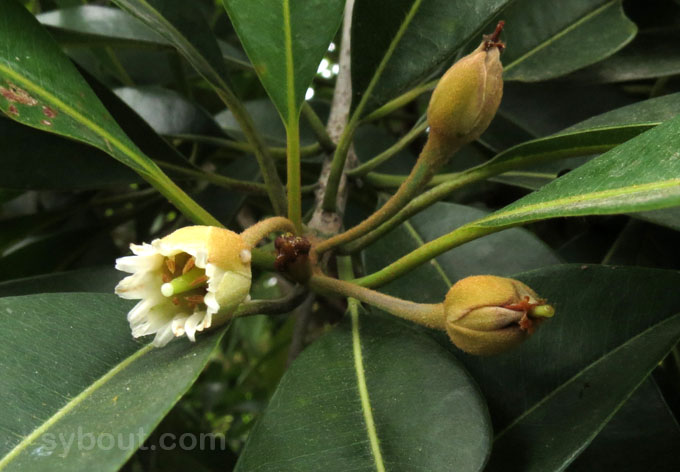
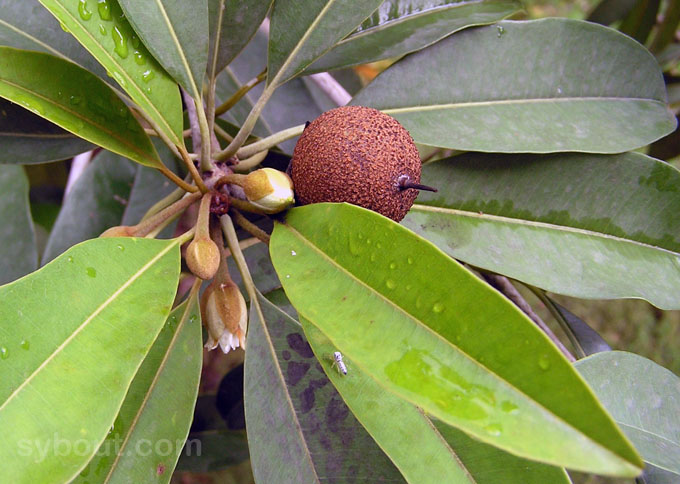

Manilkara zapota,
the Sapodilla origins from Mexico and Central America. The tree
can grow up to 30 meters height, but cultivated species usually remain
far shorter.
Though the Sapodilla has been grown for generations in home
gardens, still many people in Indonesia
will not recognize this tree. The lanceolate shaped smooth
leaves are light green when young and dark green when growing older.
Its flowers are very tiny, with inconspicuous white petals.
Only a small part of the flowers will develop into fruits.
Fruits are covered with thin brown cork layer. Young fruits are round and have a
typical spine at the end. Older fruits become oval egg-shaped and often loose
the spine. The fruit size is depending on the variety between 4 and
8 cm. It seems that there are varieties with 15 cm large fruits, but
I have never seen these in Indonesia.
It is hard to say by view when the fruits are ready to be
picked. If the fruits can be easily taken from the stalk and do not
release much milky white sap from the wound, they can be harvested.
Still they will have to be kept for a few days in a place at room temperature before they can
be consumed. The fruits ready to be eaten have a flesh color that is
a mix of yellow and reddish brown, and are very sweet in taste.
Some people in Indonesia
tell me that the juice of halve ripe fruits is a treatment for typhus.
I have not yet found any scientific confirmation of this.
Bilimbi
Latin: Averrhoa bilimbi
Family: Oxalidaceae
English: Bilimbi
Indonesian: Belimbing wuluh, Belimbing sayur
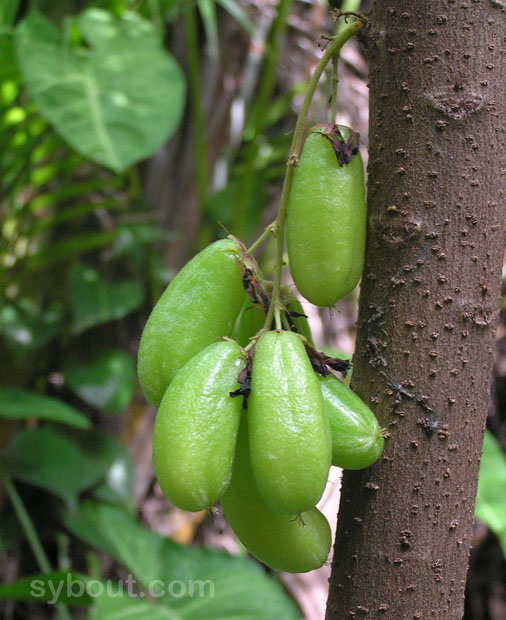
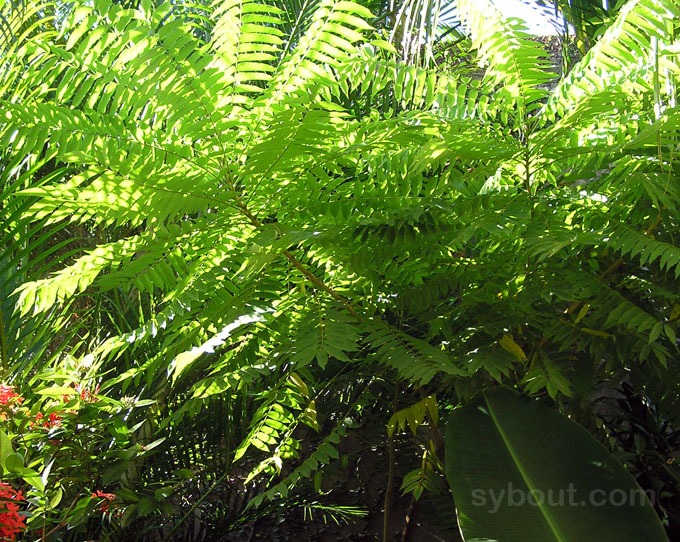
The Bilimbi shrub in my garden did not grow higher than 4 meters, but it seems that is can become a tree of 15 meters height in some conditions. This plant is native to Southeast Asia. The tree has attractive light-green feather shaped leaves, which are mainly clustered at the branch tips.
The flowers and 4-10 cm big fruits will appear from the main stem and the thicker branches.
The fruits are rarely eaten raw, as most people will find them too sour. They are an important ingredient in various Indonesian dishes. In that sense they can be seen as an alternative for tomatoes and tamarind. It seems the fruit is as well suitable for chutneys and pickles. I still have to find a recipe for these.
Bilimbi fruits are a good source of vitamin C.
Both fruits and leaves are often used as medicine. As I cannot find any scientific support for medical use, I will leave it to others to describe this.
The Bilimbi tree will grow well in any soil type that is well drained.
The plant grows best in full sun.
Papaya
Latin: Carica papaya
Family: Caricaceae
English: Papaya, Papaw, Pawpaw
Indonesian: Pepaya
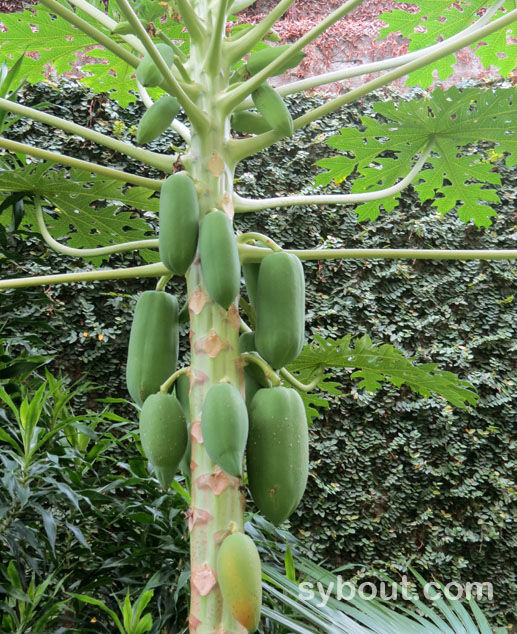
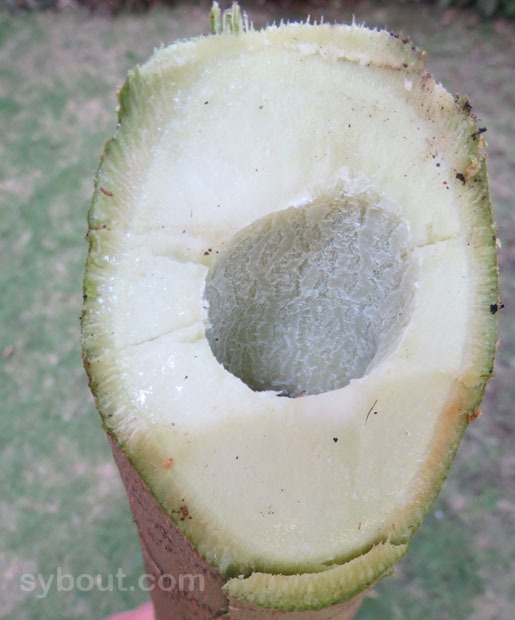
The papaya is not really a tree, but I guess nobody will mind that I included it on this page. When the plant's stem is cut you will see that it doesn't exist of wood, but of soft fibre and has an empty core. The plant has a single stem that only might develop some branches when the top is cut off. I don't think that cutting the
plant's top will result in more, or better quality fruits though.
Growing papayas often makes me confused. This probably is due to the way I do it. First of all, I never bought any seeds, but take these from a fruit bought on the market, or select some of the plants that show up
spontaneously in my garden. As I have the experience that normally some of the seedlings will grow poorly, or die because of rot at the base of the stem, I plant a few extra seedlings. If all seedlings survive, I leave only the plant that shows after some time to be the strongest and healthiest and remove the others.
Then the plant is growing and I have to wait what kind of flowers it will produce: male, female or bisexual (hermaphrodite) flowers.
In case the plant produces male flowers, you will not get any fruits, but will just have a nice looking plant with flowers that release a pleasant fragrance (especially in the late afternoon and evening).
In case the plant produces female flowers, then you will need a papaya tree with male or hermaphrodite flowers nearby, so the female flowers will be pollinated by visiting insects.
The easiest situation
occurs when the plant has hermaphrodite flowers: the plant can pollinate itself and no other papaya plants are needed for this.
For pictures of the different flower types, please visit:
http://www.smilepolitely.com/culture/science_politely_men_they_just_wont_go_away/)
Female plants will produce round-shaped fruits. The fruits of hermaphrodite plants will be elongated to pear-shaped.
Papaya trees only live a few years, or even shorter. The positive thing is that they will produce fruits continuously and all year round.
Next to the fruits other parts of the papaya tree are useful:
- Papaya leaves and the skin of its raw fruits can be used to make meat tender. The chemical responsible for this is an enzyme called papain.
- The leaves (extremely bitter) have various medical uses.
- Some people take the latex from the fruit by damaging the fruit's skin (just press your nail in it) for curing cracked dry skin on their feet.